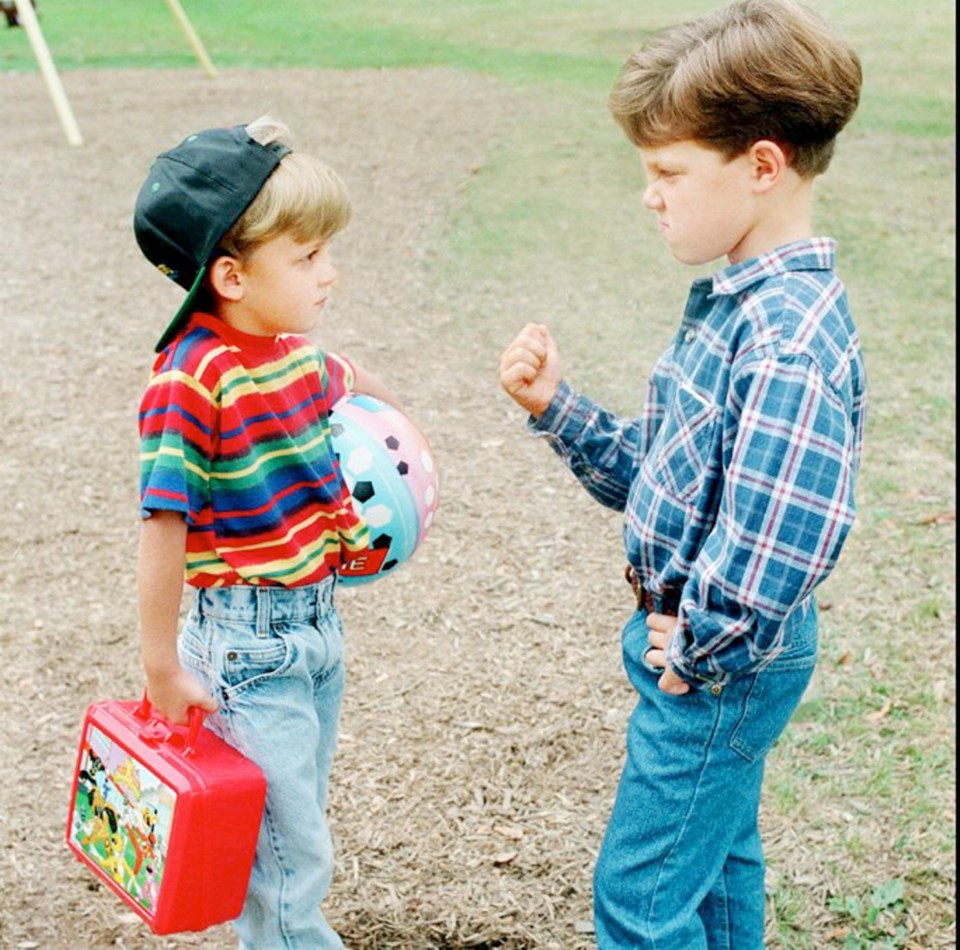Dear Mr. Dad: My wife and I have recently had to admit that our oldest daughter (who’s only eight) is a bully — but not in the usual way. She’s fine at school, has lots of friends, and I never hear a bad word about her from anyone. The problem is at home. She’s really mean to her younger sister (age five) — she takes her toys, calls her names and pushes her around.
I had a similar relationship with my older brother at about the same age, so I always assumed that it’s pretty normal for siblings to be at each other’s throat once in a while. But this seems like more than that. Is it normal for one sibling to bully another?
A: First of all, congratulations on being honest with yourself about what’s going on with your daughters. I think a lot of parents write off bullying between siblings the same way you did — as normal. And while it may indeed be normal, it’s still a real problem. In fact, according to a recent study done at the University of New Hampshire, being bullied by a brother or sister can be just as damaging as being bullied by a classmate or other non-family member. The fallout from both kinds of bullying includes anger, anxiety, depression and other mental-health problems.
The researchers, led by Corinna Jenkins Tucker, an associate professor of family studies at the university, studied data from more than 3,500 kids 17 and younger who had at least one sibling living at home.
They identified four types of aggression: property aggression (stealing, forcibly snatching, or deliberately damaging or breaking a sibling’s belongings), psychological aggression (excluding, name calling, scaring or saying things to make a sibling feel unloved or unwanted), mild physical assault (causing injury or inflicting pain by hitting or kicking without a weapon), and severe physical assault (causing injury by hitting or kicking with a weapon).
According to Tucker, children who experienced any of those four types of aggression had lower levels of well-being than those who weren’t being bullied. “Even kids who reported just one instance had more mental-health distress,” wrote Tucker.
Let’s get back to the normal versus not normal issue. A lot of people — including plenty of mental-health professionals — believe that fighting, aggression and general picking on each other between siblings is not only normal, but might even be beneficial. The thinking is that it’s one of those “it builds character” or “it prepares kids to live in the real world” kinds of things.
I agree that a lot of what goes on between siblings is good. They learn about sharing, empathy, negotiation and conflict resolution.
But the big question is how we, as parents, can tell when the benefits of sibling squabbling end and the damage begins. It’s really pretty simple.
When siblings are going back and forth, antagonizing each other, it’s less of a problem. Both kids know what they have to do to push the other’s buttons — and, more important — both know what it feels like to be on the receiving end of someone else’s mean, hurtful behaviour. In situations like this, there’s no clear bully or victim.
But it’s very different when the badmouthing, taunting, stealing and even physical aggression is a one-way street. In these situations, there’s just one bully and just one victim — the same dynamic that happens between peers in schoolyards, online and elsewhere.



